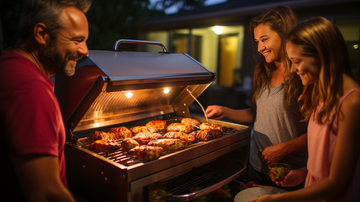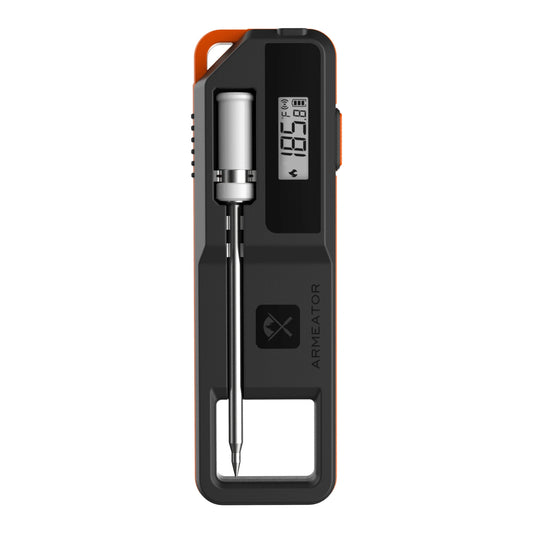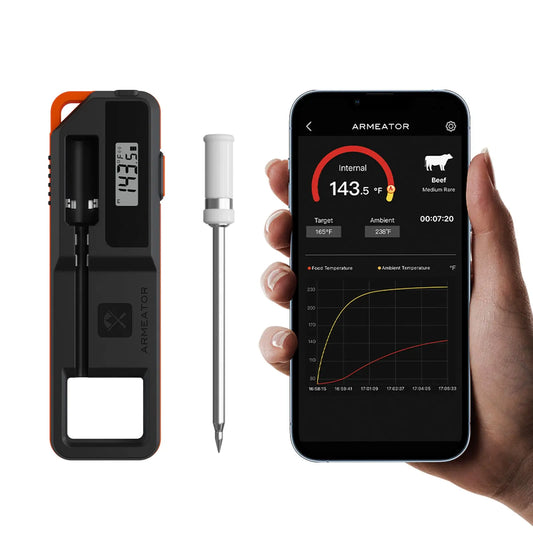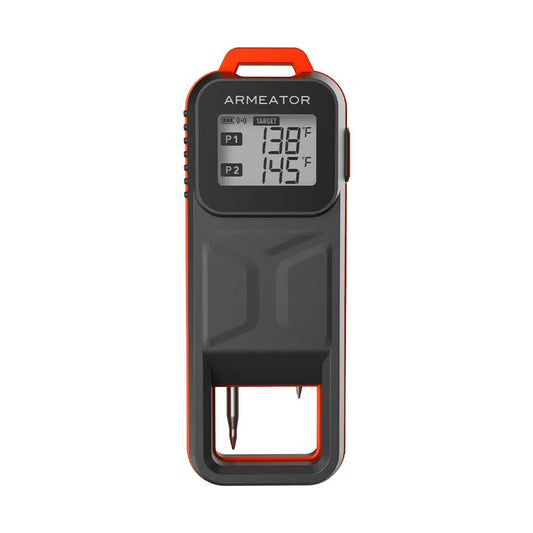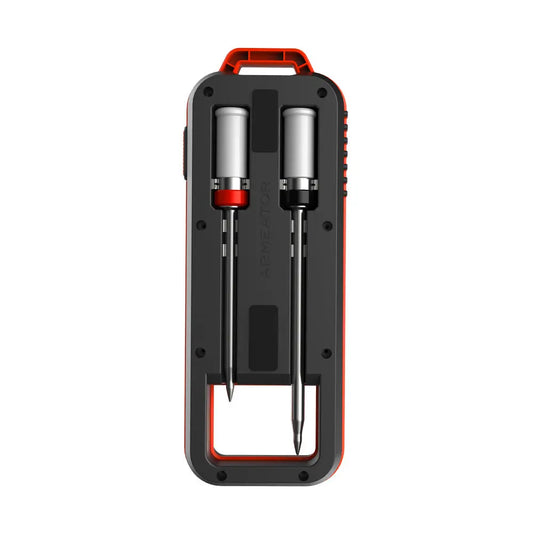Dry rub and wet rub are two common techniques when it comes to barbecue seasoning, and they play different roles in the cooking process. Dry rub evenly applies the seasoning mixture to the food, while wet rub uses the liquid seasoning mixture to add flavor and moisture. These two methods have their own characteristics, providing different experiences for different foods and personal tastes.
However, no matter which method you use, the key to making delicious barbecue is to master the temperature of the meat. By using a wireless meat thermometer, you can monitor the internal temperature of the meat on the app at any time. Even beginners can easily make juicy and tender meat with dry or wet rub, and become a cooking master in the eyes of friends!

What's Dry Rub:
The dry rub is typically a dry mixture of ingredients. It usually starts with a base of salt, sugar, and pepper, and you can add any herbs, spices, or blends to it. Some common ingredients in dry rubs include salt, sugar, chili powder, mustard powder, cumin, onion powder, garlic powder, black pepper, cinnamon, cumin, and oregano. Dry rubs not only help create delicious flavors but also help remove excess fat from the meat, reducing the greasy texture.

Tips for Dry Rub:
●Balance: The most important thing to remember when making your own spice blend is that a dry rub is not just a mixture of spices and herbs; it's a blend of flavors. A good dry rub will create a balanced taste, enhancing the flavors of the meat without overpowering them.
●Press and rub: Use your palms to press and rub the dry rub thoroughly into the surface of the ingredients, ensuring that the seasoning fully penetrates.
●Resting time: Let the dry-rubbed ingredients sit at room temperature for a while, allowing the flavors to blend and penetrate the meat.
●Awakening the spices: Use a mortar and pestle or a spice grinder to gently crush and grind the spices, awakening and infusing the flavors and aromas.
●Thorough mixing: When mixing the various components of the dry rub, ensure thorough blending to evenly distribute the seasonings. This can be achieved by mixing all the ingredients together and gently stirring a few times.
●Using juices to help the rub adhere: The natural juices of the meat should be enough to make the dry rub stick to it. If not, you may need to brush the surface of the meat with olive oil to help the spices adhere.

What's Wet Rub:
In contrast to dry rub, wet rub uses liquid or semi-solid mixtures such as sauces, marinades, oils, vinegar, fruit juices, or other seasonings. It adds flavor and moistness to the ingredients during the preparation stage before cooking.
Wet rubs typically have richer flavors and textures, providing moisture and juiciness to the ingredients during the grilling process. It increases the moistness of the ingredients, helps maintain tenderness, and allows the flavors of the seasoning to permeate the surface of the meat.
Almost any liquid can be used to create a wet rub, but popular choices include vinegar, coffee, beer, apple cider, bourbon, soy sauce, honey, mustard, ketchup, lemon juice, and more.

Tips for Wet Rub:
●Even coating: Ensure that the wet rub mixture is evenly applied to the surface of the ingredients. Use a brush or your fingers to gently spread it, ensuring that every part is fully covered. This will ensure even penetration of the seasoning during the cooking process and provide consistent flavor.
●Allow time for absorption: Allow the wet rub mixture to penetrate the ingredients by allowing them to marinate. After applying the wet rub, you can refrigerate the ingredients to let them sit and absorb the flavors for a few hours or overnight.
●Basting during cooking: While grilling or smoking, you can use the remaining wet rub mixture as a basting sauce, brushing it onto the ingredients periodically to add extra moisture and flavor.
●Adjusting consistency: Wet rubs can be thick or thin, depending on your preference. You can adjust the consistency by adding more liquid ingredients or reducing the amount of solid ingredients in the mixture.
In a Sum
The dry rub is suitable for food that requires caramelization of the outer layer and flavor absorption during grilling. The wet rub is suitable for increasing the moisture and tenderness of the food. The choice between dry and wet rub depends on personal taste preference and food characteristics. Additionally, you can also decide which type of rub to use based on specific recipes and barbecue styles.


